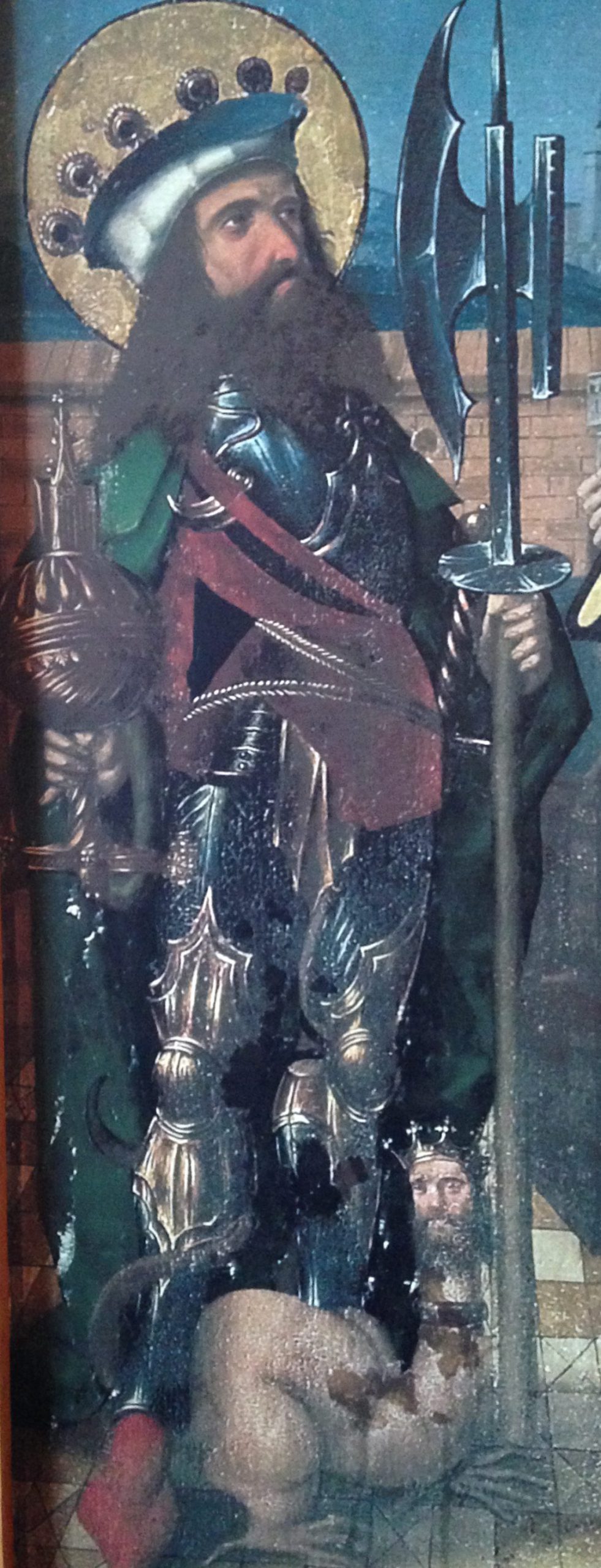
Sankt Olav (Olaf the Holy one, also Saint Olaf of Norway) is the greatest Nordic saint, and the national saint of Norway. He was born Olav Haraldsson in the year 995 in a very noble Norwegian family.
Already as a young boy he travelled afar on raids, plundering expeditions and Viking voyages, and wreaked havoc in many places, such as Mälardalen in Sweden and even as far off as England.
According to tradition, he was among those responsible for burning down London Bridge, but this cannot be verified by any written records.
Olav was baptised into Christianity during a stay in Normandy, 1013 – 1014, and he returned in the year 1015 to Norway, where he seized power from the earls who reigned at the time. He became an active, influential king, who Christianised extensive areas of Norway, but his opponents drove him into exile in 1028. He took refuge in Novgorod, where his sister-in-law Ingegerd reigned with her husband, Yaroslav the Wise, Grand Prince of Kiev.
In the year 1030 he returned to Norway to seize power. There are many stories and legends connected to the road from Novgorod back to Norway and the St. Olav pilgrimage routes are partly
based on these. Olav sailed west via Finland’s west coast and archipelago, and is believed to have come ashore in Selånger, and to have proceeded west from there.
Olav’s grave south of Stiklestad soon became a pilgrimage destination and the site of the largest cathedral building in the Nordic countries, Nidaros Cathedral in Trondheim, Norway.
He met his Norwegian opponents at the battle of Stiklestad on July 29 th, 1030, where he was killed. Even at the place where he died, miracles began to happen, and his grave south of Stiklestad soon
became a pilgrimage destination and the site of the largest cathedral building in the Nordic countries, Nidaros Cathedral in Trondheim, Norway.
The stories about Olav and the miracles associated with him spread like wildfire across the Nordic countries and northern Europe. Olav was canonised in 1031, only one year after his death. The Olav cult spread quickly in the eastern part of the Svealand during the beginning of the 13 th century, and was established in the Bothnia region in the late 13 th and early 14 th centuries. Several medieval sculptures and other sources testify to the fact that there was an Olav’s cult in Ostrobothnian (see report here).
Saint Olav became the patron saint of for instance travellers on the Baltic Sea, and can be considered the patron saint of all travellers and hikers.
The story of Olav’s life is known through many sources, but predominantly from Snorre Sturlason’s great work Heimskringla which is believed to have been written in the 13 th century. Heimskringla is the story of the Nordic kings, and the story of St. Olav’s life is recorded in the part titled “Sankt Olavs
saga” – St. Olav’s Tale.
–––
* In Swedish, the names “Olof den helige” (Olof the Holy one), and “Sankt Olof” (Saint Olof) were previously in use, but in recent years, the original Norwegian Olav has become more widespread. The pilgrimage routes are therefore called St. Olavsleder – St. Olav’s routes, and the man is referred to as St. Olav also in Swedish.
